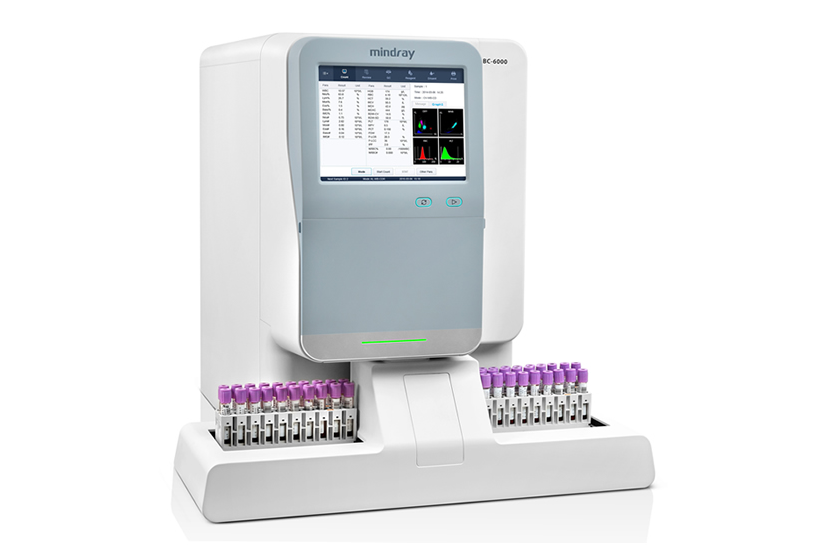 Zoom
Zoom
Model: BC-6000
Manufacturer: Mindray
Origin: China
The BC-6000 automated hematology analyzer has the ability to transmit, distribute, transport, recover samples automatically, and manage the data of connected devices.
Principles
• Use SF block method to count WBC, 5-component leukocytes and NRBC.
• DC impedance method for RBC and PLT.
• Non-cyanide reagent for hemoglobin test.
• Mindray's unique SF block technology with 2 laser signal angles and 1 optical signal angle allows building 3D scattering diagrams to create greater distance between each blood cell group, ensuring more accurate results. At the same time flagging warnings more accurately with patient samples, reducing the rate of negative results and false results. Therefore reducing the number of blood smear glasses to consider.
DIFF channel:
• In the DIFF graph, the BC-6000 not only provides the results of 5-component leukocytes (with non-mature granulocytes) but also provides useful parameters in research such as HFC (Blast white & atypical ), InR (malaria information) and flagging NRBC, Band, PLT and atypical white blood cells.
• HFC parameters * (#,%) show fluorescence cell populations, eg blast and atypical white blood cells.
• IMG parameter (#,%) provides information about immature granular cells, including marrow, marrow, marrow, leukocytes and immature avidity.
WNB channel:
• In the WNB graph, the BC-6000 provides results of NRBC, Basophils and WBC-N *. This means that the amount of NRBC is reported even in routine CBC regimens, if present in the sample.
• Basophils are counted in this channel together with NRBC.
• Basophil and NRBC are measured on the BC-6000 without any additional chemicals & costs.
Result of NRBC in CBC mode:
• Automatically edit WBC counting results, ensuring that baby samples have accurate results.
• Diagnosis of anemia, hemolysis.
• Monitoring hematopoietic pathology.
• Reduce the frequency of review.
• NRBC usually does not appear in the blood except in neonatal cases. The detection of NRBC is essential in the diagnosis and monitoring of hematopoiesis.